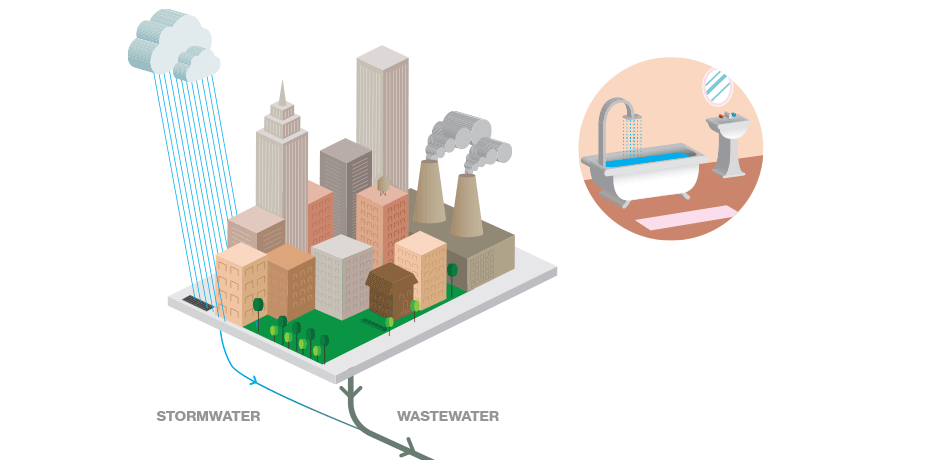Ecological Impact of Waste Water Treatment: What You Required to Know
Ecological Impact of Waste Water Treatment: What You Required to Know
Blog Article
Strategic Approaches to Boost Waste Water Therapy Effectiveness and Reduce Environmental Effect
In the world of drainage therapy, the mission for improved performance and minimized ecological influence is a perpetual obstacle that requires strategic options. As culture grapples with the critical to manage water resources sustainably, a nuanced strategy ends up being crucial. The combination of advanced therapy innovations, energy-efficient procedures, source recovery strategies, improved nutrient removal methods, and clever surveillance and control systems represents a diverse structure for attending to these pressing problems. Nonetheless, what lies at the core of this complicated web of techniques is the potential to revolutionize the means we approach drainage therapy, not simply as a procedure of disposal, however as an important chance for technology and ecological stewardship.
Advanced Therapy Technologies
Cutting-edge membrane layer filtration systems have actually revolutionized sophisticated wastewater therapy processes, substantially improving the removal of impurities. This technology has shown to be extremely efficient in eliminating a vast array of pollutants, including drugs, heavy metals, and natural compounds, which are typically testing to get rid of through conventional therapy techniques.
Furthermore, membrane filtration systems offer numerous benefits over standard treatment approaches. Furthermore, these systems are extremely flexible and can be conveniently incorporated right into existing therapy plants or used as standalone devices for decentralized applications.
Energy-Efficient Procedures
The combination of energy-efficient processes in wastewater therapy systems is important for enhancing source use and reducing operational prices. One crucial method to boosting energy performance in wastewater treatment is the usage of innovative oygenation systems, such as fine bubble diffusers or surface aerators, which can improve oxygen transfer effectiveness and decrease energy consumption.
Moreover, enhancing procedure control and automation through making use of advanced sensing units and checking systems can enhance total power efficiency by changing operations in real-time based upon actual need and problems. Carrying out power audits and frequently checking energy performance indications are essential techniques to recognize locations for enhancement and track energy-saving initiatives properly. In general, the adoption of energy-efficient procedures in wastewater therapy not just profits the atmosphere but likewise adds to lasting price financial savings and functional sustainability.
Source Recuperation Techniques
With a focus on maximizing source utilization and sustainability in wastewater therapy systems, the application of resource recuperation strategies arises as a pivotal element in boosting operational performance. Resource healing techniques in wastewater treatment include the identification and extraction of valuable sources from the waste stream, therefore turning what was when thought about waste right into a useful asset. By applying source recovery strategies such as nutrient elimination and healing, power generation from organic matter, and the manufacturing of multiple-use water, wastewater therapy plants can minimize environmental effect while taking full advantage of performance.

Enhanced Nutrient Removal Methods
Implementing sophisticated nutrient removal strategies is important for enhancing the effectiveness of wastewater therapy systems. Enhanced nutrient elimination plays a critical duty in minimizing the ecological influence of cured effluent released into water bodies. Among the key methods used for enhanced nutrient elimination is the procedure of organic nutrient elimination (BNR), which includes the removal of nitrogen and phosphorus with organic procedures. This can be attained with the usage of specialized microorganisms that can convert nitrogen substances into inert nitrogen gas via denitrification, and build up phosphorus within their cells with a procedure called enhanced organic phosphorus elimination (EBPR)

In enhancement to BNR, advanced treatment methods such as membrane layer bioreactors (MBRs) and built wetlands can likewise be employed to boost nutrient elimination performance. By integrating these sophisticated nutrient removal strategies into wastewater therapy sectors, municipalities and systems can effectively lower nutrient air pollution and shield the setting.
Smart Surveillance and Control Systems
Making use of cutting-edge innovation, the integration of wise tracking and control systems transforms the operational efficiency of wastewater therapy facilities. These systems include sophisticated sensing that site units and information analytics to continuously monitor essential specifications such as pH degrees, turbidity, liquified oxygen, and flow prices in real-time. By collecting and assessing this data, operators can get valuable insights right into the performance of the therapy processes, enabling aggressive modifications to optimize treatment performance.
Smart tracking and control systems additionally sustain remote tracking capacities, enabling operators to accessibility real-time information and control features from off-site areas. This remote ease see here of access improves functional versatility and responsiveness, enabling speedy interventions in situation of system malfunctions or variations in influent high quality. The anticipating maintenance capabilities of these systems help prevent equipment failures and reduce downtime, inevitably boosting the general reliability of wastewater treatment operations.
Verdict
To conclude, calculated methods such as sophisticated therapy modern technologies, energy-efficient procedures, source recovery strategies, enhanced nutrient elimination techniques, and clever tracking and control systems play a vital function in boosting wastewater therapy effectiveness and decreasing environmental impact. By implementing these methods, wastewater treatment plants can improve their total performance, reduce energy consumption, recoup useful resources, and guarantee conformity with ecological regulations. These methods are important for effective and lasting company website wastewater management methods.

In final thought, calculated strategies such as advanced therapy innovations, energy-efficient processes, resource recuperation methods, enhanced nutrient removal methods, and clever tracking and control systems play a crucial function in enhancing wastewater therapy performance and reducing ecological effect.
Report this page